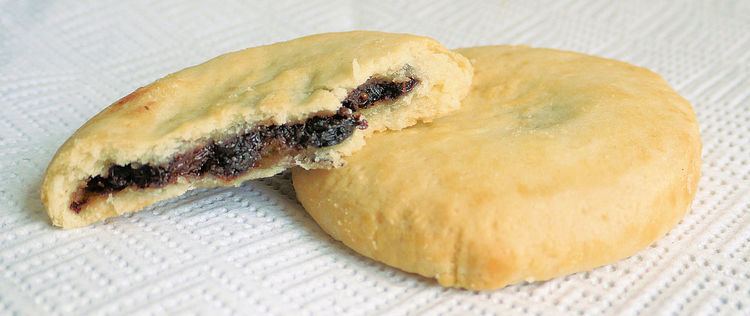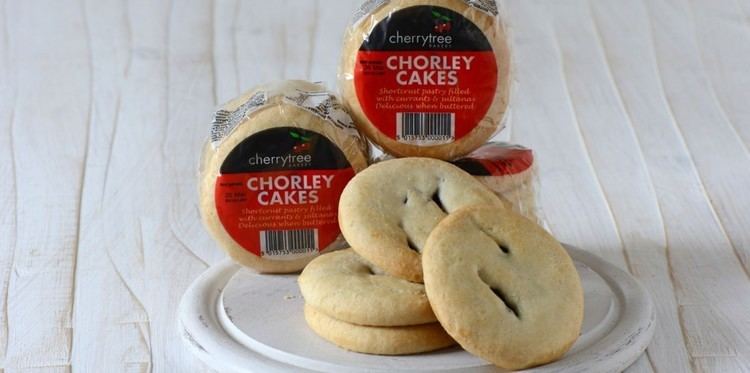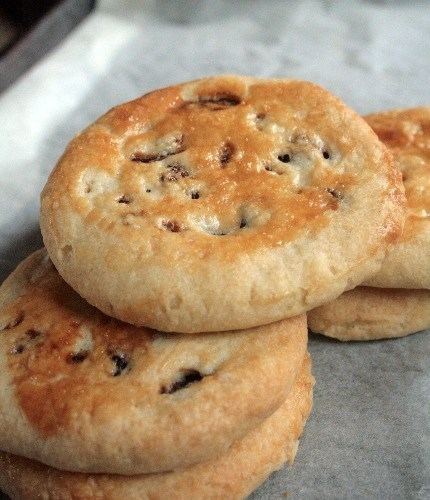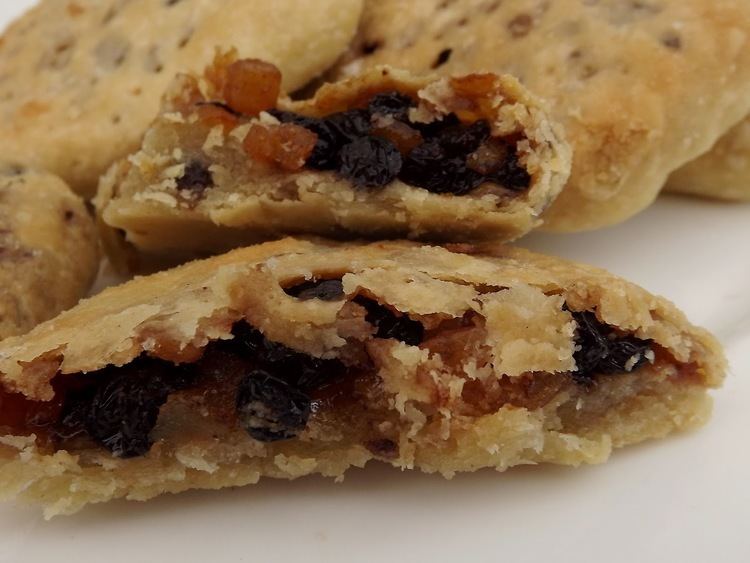 | ||
Similar Flies' graveyard, Marry girl cake, Banbury cake, Cupcone, Bulla cake | ||
Chorley cakes
Chorley cakes are flattened, fruit-filled pastry cakes, traditionally associated with the town of Chorley in Lancashire, England.
Contents
They are a close relative of the more widely known Eccles cake, but have some significant differences. The Chorley cake is significantly less sweet than its Eccles cousin, and is commonly eaten with a light spread of butter on top, and sometimes a slice of Lancashire cheese on the side. A Chorley cake is made using currants, sandwiched between two layers of unsweetened shortcrust pastry, whereas an Eccles Cake uses flaky puff pastry, which after baking is normally a deeper brown in colour. The other difference is that the currants in the Eccles Cake are often concentrated together in the middle while in the Chorley and Sad Cake the fruit is usually evenly distributed.

It is not uncommon to see some sugar added to the fruit, or sweeter raisins or sultanas used. These sweeter varieties are sometimes referred to as "snap". Locals often refer to Chorley Cake as Fly Pie.

Sad cake

Also related to the Chorley cake is East Lancashire's "Sad Cake", made to a similar recipe. It was found in the Darwen, Blackburn, Accrington, Burnley, Colne, Nelson and Padiham areas and throughout the Rossendale area. Sad cake is often up to 12 inches (30 cm) in diameter, as opposed to the Chorley cake being 3 to 5 inches (8 to 12 cm) and is made by rolling out the pastry and dropping raisins and or currants evenly over the pastry then folding in on several sides and then rolling out again to the required size, usually round but can be square. It was then cut into triangular sections similar to a sponge cake section and was a regular addition in a working man's lunch box (the whole meal was known as Bagging, snap or packing). The sad cake was a filler for eating either after one's sandwiches or as a separate tea break snack during the working day in the Cotton mills and coal mines of Lancashire. A spread of margarine, butter or even jam was placed on top. It may be eaten with sandwiches of jam and crumbly soft Lancashire cheese.
Chorley Cake Street Fair

The October "Chorley Cake Street Fair", restarted in 1995, promotes the cakes, with a competition for local bakers to produce the largest ever Chorley cake.
